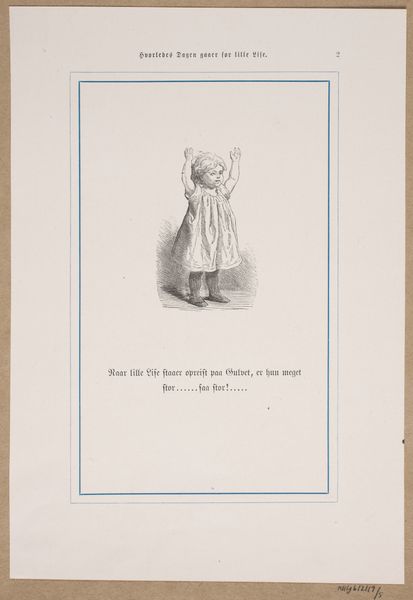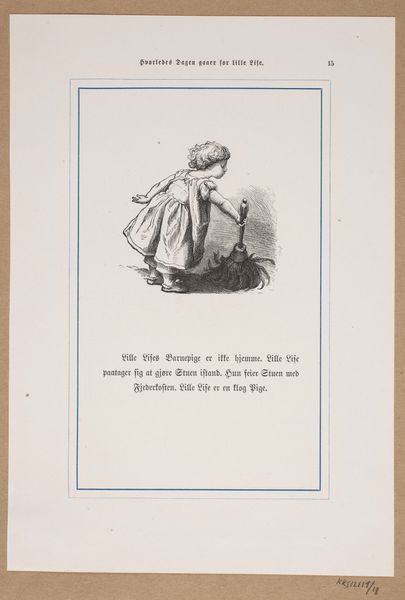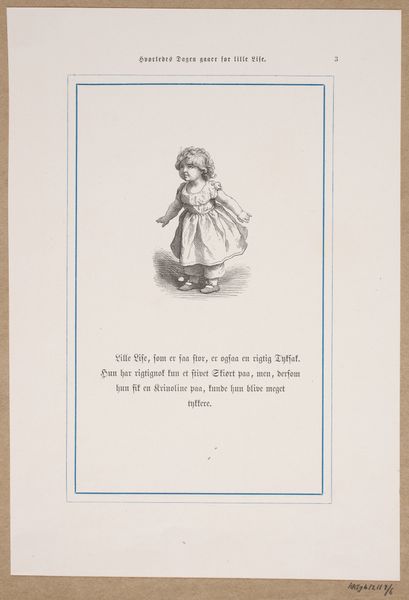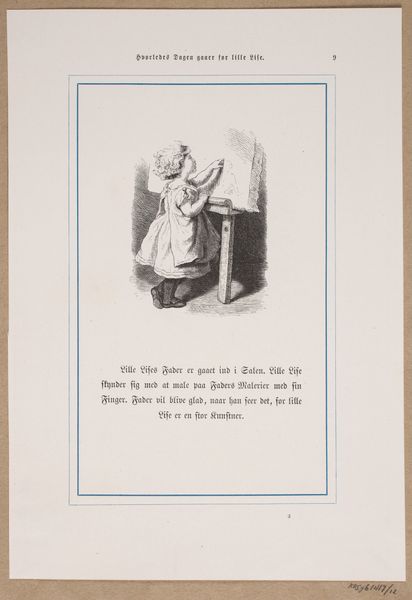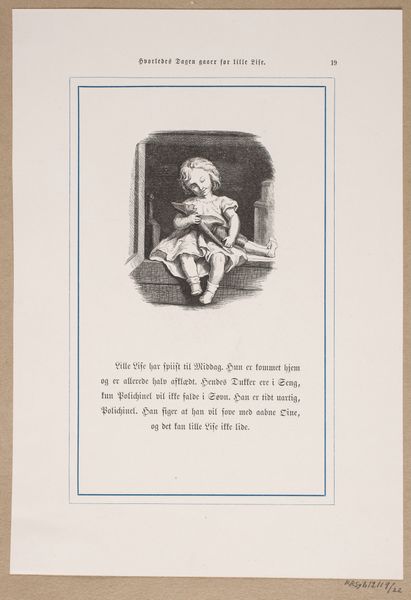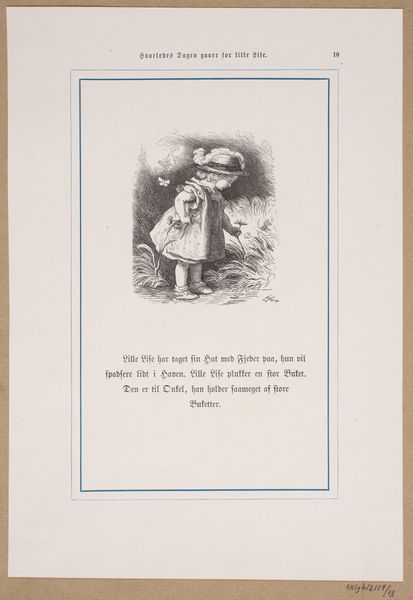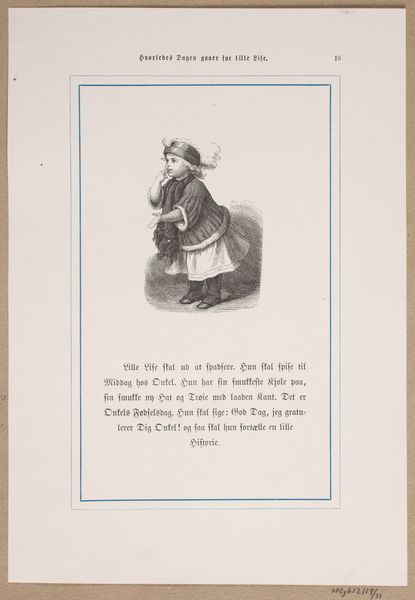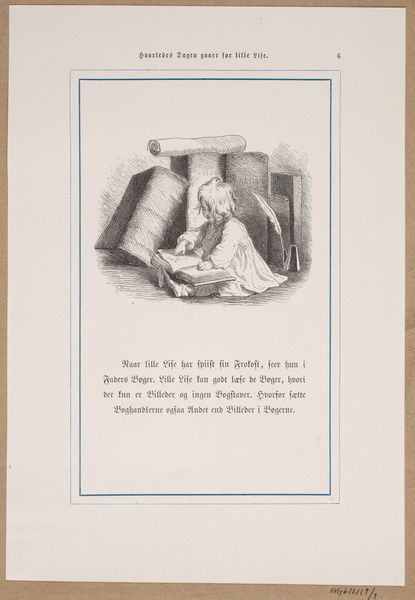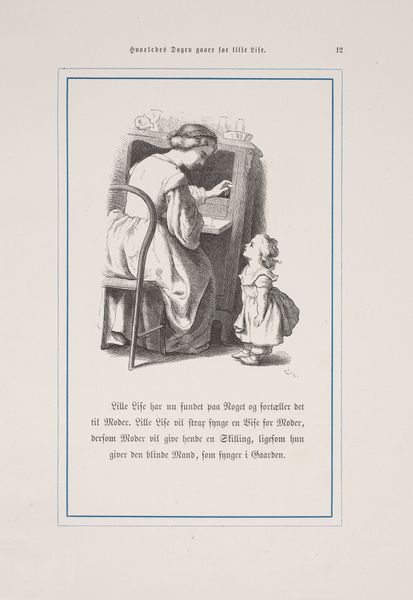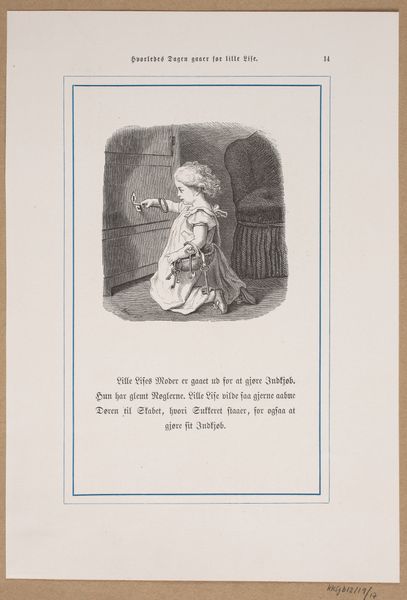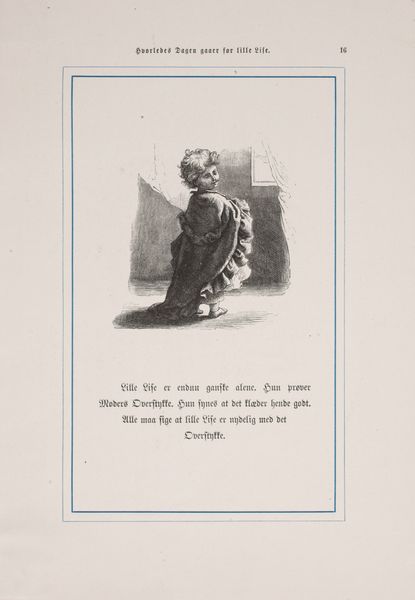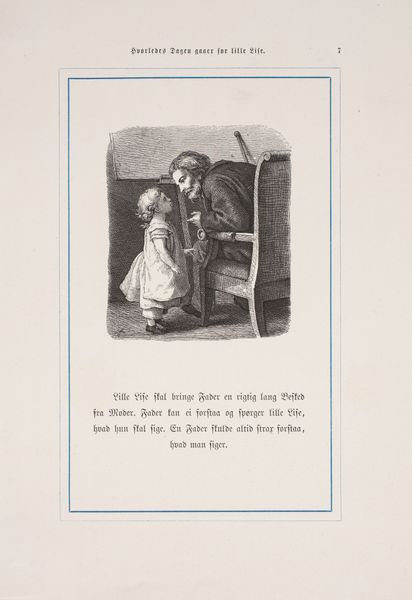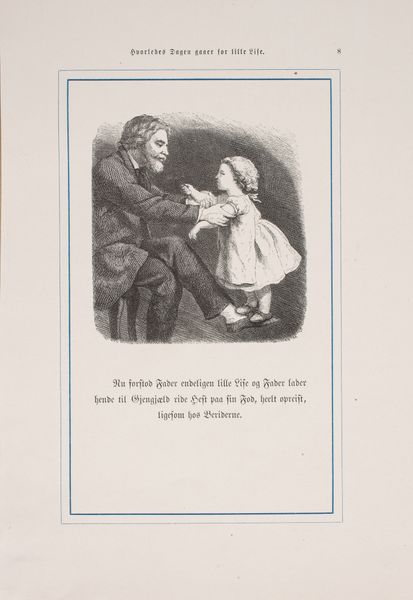
Illustration til "Hvorledes Dagen gaaer for Lille Lise" 1863
0:00
0:00
drawing, print, paper, woodcut
#
portrait
#
drawing
#
ink paper printed
# print
#
paper
#
woodcut
#
watercolor
Dimensions: 271 mm (height) x 187 mm (width) (bladmaal)
Editor: Here we have Lorenz Frølich's "Illustration til "Hvorledes Dagen gaaer for Lille Lise"", a woodcut print from 1863. The young girl is the subject and she's dressed up to go out, admiring her boots. I’m curious about how such a simple domestic scene could resonate then—and even now. What stands out to you about this illustration? Curator: What immediately strikes me is the way this seemingly simple image of childhood is framed – both literally by the border and figuratively by the text below, and even the title. It wasn't merely for private viewing but for a broader audience. How does this illustration fit into the visual culture of the mid-19th century? Consider, how did illustrations like these help shape societal views about childhood, domesticity, and even national identity? The text below indicates the story revolves around Little Lise and her new boots, hinting at ideas around modesty or being presentable. Editor: So, it’s more than just a cute picture. The way it's presented - in print, with text, makes it part of a bigger story about the expectations placed on children at the time. How widely were images like this distributed? Curator: Prints such as this would often be part of periodicals, children's books, or even educational materials, which were becoming increasingly accessible to a wider segment of the population. Consider the potential impact of seeing these idealized scenes replicated across various platforms – solidifying norms and subtly instructing readers on appropriate behavior. What do you think a young reader at the time would make of this? Editor: I see your point. It’s interesting to think about how art plays a role in shaping cultural values, even with something as sweet-looking as this little girl admiring her boots! I had not considered its role as instruction. Curator: Exactly. It's through everyday images like this that broader cultural scripts are often circulated and internalized. Editor: That gives me a new perspective on what seems like just a quaint historical image! Thanks!
Comments
No comments
Be the first to comment and join the conversation on the ultimate creative platform.
